Sites: news | india | latam | brasil | indonesia
Feeds: news | india | latam | brasil | indonesia
location: Botswana
Social media activity version | Lean version
Analysis of largest elephant surveys ever shows stable population, but disturbing trends
- New research comparing data from the two largest-ever elephant surveys reveals the overall population in the Kavango Zambezi Transfrontier Conservation Area is stable, but also uncovers some concerning local trends.
- Elephant numbers in Botswana, home to more elephants than any other country, are stable overall, but declining numbers in areas where hunting is permitted, and increasing numbers in protected areas, suggest underlying issues for Botswana’s elephants.
- Survey comparisons reveal that elephants have all but disappeared from the western Angolan section of the KAZA area, but a lack of local research, an issue across the region, means conservationists are unsure why.
- More research is needed across the transfrontier conservation area to ensure a safe future for the world’s largest elephant population.
Count, connect, conserve: Southern Africa elephant survey points the way (commentary)
- The Kavango Zambezi Transfrontier Conservation Area (KAZA TFCA) is the largest transboundary terrestrial conservation area in the world – spanning five countries in southern Africa, it is home to Africa’s largest savanna elephant population.
- A 2022 survey of KAZA’s elephants revealed an estimated 227,900 individuals, but their movement is increasingly blocked by fences and human settlements, pointing to the need for better habitat connections and corridors.
- “Now that KAZA’s elephants have been counted, the landscape’s key wildlife areas must be connected, so that elephants and other species can be better conserved,” a new op-ed states.
- This post is a commentary. The views expressed are those of the authors, not necessarily Mongabay.
‘Anthill tiger’: Putting one of Africa’s rarest wildcats on the radar
- Black-footed cats (Felis nigripes) are the smallest and also one of the rarest wildcat species in Africa. They’re very reclusive, extremely hard to find, and are among the least-studied nocturnal mammals on the continent.
- Data-scarce species like the black-footed cat are difficult to conserve because the most basic knowledge — of their home ranges, territories, habitat, and reproductive, dietary and other behaviors — is often lacking. Without these many life-cycle details, the targeting of effective preservation strategies is near impossible.
- German ecologist Alexander Sliwa has made it his life’s mission to research the elusive black-footed cat. Establishing and working with a small team, he eventually led the way to the formation of the Black-footed Cat Working Group. Thanks largely to those efforts, a substantial database on Felis nigripes now exists.
- This work led to the black-footed cat being listed as vulnerable on the IUCN Red List. Though the species’ survival remains far from secure, the design and implementation of conservation strategies will no longer have to start from scratch, and can be built on valuable, already accumulated baseline data.
Protecting the peatlands and woodlands in Angola’s ‘source of life’
- As negotiations over slowing climate change unfold at the COP27 climate summit in Egypt, a group of scientists and conservationists is pushing for recognition of the Angolan Highlands as a vital carbon sink.
- The network of rivers, lakes and peatlands surrounded by miombo woodland in these highlands together maintain the year-round flow of water into the Okavango River Basin, and ultimately the wildlife-rich Okavango Delta in Botswana.
- Isolated for decades by civil war, in peacetime the Angolan Highlands have increasingly attracted returning populations to log, drain its bogs, and clear forests for agriculture.
- The National Geographic Okavango Wilderness Project is pushing for protection of vital parts of the highlands to safeguard their role as a “water tower” for countries in the region — and prevent the peatlands from turning from a carbon sink into a carbon source.
Rising temperatures further threaten already endangered African wild dogs
- Researchers examined three populations of African wild dogs in Botswana, Kenya and Zimbabwe to understand if high heat correlates with increased mortality.
- In two out of the three sites, there was a strong relationship between extreme temperatures and increased mortality, with intentional human killings, snare traps, road fatalities, and disease transmission from domesticated dogs responsible for 44% of the deaths.
- The researchers say high heat is pushing both wild dogs and pastoralists out of their typical grounds, creating a higher likelihood of human-wildlife conflict and mortalities for the dogs.
NRA Video: Conquering nature will never be the silver bullet (commentary)
- Last week, The New Yorker released footage of National Rifle Association CEO Wayne LaPierre struggling to kill an elephant in Botswana.
- Kate Dylewsky, senior policy advisor for the Animal Welfare Institute, says the video is an opportunity to assess claims that the trophy hunting promotes conservation.
- “Killing imperiled species to save them will never be a silver bullet,” writes Dylewsky. “We should not seek to ‘conquer’ nature; instead, we should preserve, respect and appreciate the incredible species that share the Earth with us. No species that faces extinction should be further victimized by someone looking to hang a head on a wall.”
- This article is a commentary. The views expressed are those of the authors, not necessarily Mongabay.
Alarm as exploratory drilling for oil begins in northern Namibia
- Reconnaissance Energy Africa, an oil and gas company with headquarters in Canada, has recently begun exploratory drilling in northern Namibia.
- Conservationists and local communities are concerned over the potential environmental impact that oil and gas extraction could have on such an important ecosystem.
- Northern Namibia and Botswana have a number of interconnected watersheds including the Okavango Delta – the potential for pollutants to enter watercourses and spread throughout the region are a particular concern.
Calls for swift action as hundreds of elephants die in Botswana’s Okavango Delta
- As many as 400 elephants have died in Botswana’s Okavango Delta since March, wildlife experts say.
- Government authorities say poaching, poison and anthrax have been ruled out as the causes of death.
- Conservationists have questioned the government’s handling of the mass deaths and rejection of assistance to test and investigate.
- Botswana has the largest elephant population of any country, with the resultant rise in human-animal conflicts leading the government to rescind some protections for the animals.
Breaking down barriers: Cattle and wildlife compete in Southern Africa
- Thousands of kilometers of fencing designed to keep cattle away from disease-carrying wildlife such as buffalo now cover many parts of sub-Saharan Africa.
- These disease-control fences have a devastating impact on wildlife by blocking migration routes and isolating populations.
- Global food safety rules that require that beef be produced in areas free of disease such as foot-and-mouth disease have historically made it difficult for regions with wildlife populations to trade in beef.
- Southern African nations are exploring a new approach to trade that may reduce the reliance on fences, in the process also allowing key migration routes to be restored.
‘Let us trade’: Debate over ivory sales rages ahead of CITES summit
- Botswana, Namibia, Zambia and Zimbabwe want to sell off their ivory stocks to raise money for conservation.
- Growing human and elephant populations in these southern African countries have provoked increased human-wildlife conflict, and the governments see legal ivory sales as a way to generate revenue for conservation and development funding.
- Other countries, most notably Kenya, oppose the proposal, on the grounds that previous legal sales stimulated demand for ivory and coincided with a sharp increase in poaching.
A plea to Botswana: Please rethink a “Not Enough Fences” approach (commentary)
- The Government of Botswana is considering significant changes to the country’s approach to wildlife management.
- The proposed policy reflects a worrying lack of recognition of the habitat and migration route requirements that the future of southern Africa’s wildlife fundamentally depends upon.
- Now is not the time to cut-off migratory corridors or build new fences. Instead, it is time to make land-use decisions that will be socially, ecologically and economically sustainable for generations to come.
- This post is a commentary. The views expressed are those of the author, not necessarily Mongabay.
Trouble in Botswana’s elephant paradise as poaching said to rise
- Botswana is home to 130,000 elephants, a third of Africa’s total elephant population, and has gained a reputation as a sanctuary for the threatened species.
- The country has a hunting ban and strict anti-poaching measures in place.
- But a report based on an aerial survey carried out last year appears to show an alarming increase in poaching, notably of male elephants for their typically larger tusks — a finding disputed by the government.
- The government is considering ending the hunting ban to allow the trophy shooting and culling of elephants to get their population under control.
Top camera trapping stories of 2018
- Camera traps, remotely installed cameras triggered by motion or heat of a passing person or animal, have helped research projects document the occurrence of species, photograph cryptic and nocturnal animals, or describe a vertebrate community in a given area.
- Camera trapping studies are addressing new research and management questions, including document rare events, assess population dynamics, detect poachers, and involve rural landowners in monitoring.
- And with projects generating ever-larger image data sets, they are using volunteers and, more recently, artificial intelligence to analyse the information.
Speed trap: Cameras help defuse human-cheetah conflict in Botswana
- Increases in human-wildlife conflict could undermine Botswana’s conservation efforts, with farmers in some areas shooting carnivores preventatively to protect their livestock.
- Camera traps have helped researchers in Botswanan farmland to monitor cheetahs and other elusive or low-density predators without habituating them to human presence, a key feature in areas where farmers believe they will kill livestock.
- Communicating with local farmers and sharing camera-trap data on cheetahs’ territorial behavior and long-distance travel can help show farmers there may be far fewer individuals than they realize — “the cheetah seen today on one farm may be the same one seen [earlier] several farms away.”
Language and conservation (insider)
- Using an example from a trip to Zimbabwe and Botswana, Jeremy Hance writes about the words we choose matter when it comes to conservation.
- A trip to Africa to see its wildlife should be an experience that goes well beyond entertainment: it should be educational, enlightening, moving, spiritual and, ultimately, transformative.
- When a guide refers to species by silly nicknames, one can’t help but feel that the guide places little value on their own wildlife.
- This is an insider story. To read, please become a member.
Stay or go? Understanding a partial seasonal elephant migration
- Elephants in Zimbabwe’s Hwange National Park wearing GPS tracking tags shared a general dry-season home range but followed three different wet-season migration strategies: residency, short-distance migration, and long-distance migration.
- Despite similar dry-season conditions that kept all the tagged elephants near provisioned waterholes, the migrating elephants began their seasonal movements at the onset of the first rains.
- Scientists urge collaboration among stakeholders and countries to maintain the long-distance, cross-border migrations some animals need to survive.
Tracking elephant movements reveals transboundary wildlife corridors
- Data from satellite tracking tags on 120 elephants in southern Africa have identified a suite of wildlife movement corridors across five southern African countries, suggesting the importance of cross-border coordination.
- Wide-ranging movements of elephants include dispersal from northern Botswana north into Angola and south toward the Kalahari Desert.
- Research findings have suggested that open and unimpeded movement corridors can help reduce conflict with human residents while blocked corridors can push elephants and other wildlife into new developments or villages, resulting in increased conflict.
87 elephants found dead in Botswana, one of last safe havens for the species
- At least 87 elephants were killed by poachers in recent months, conservation nonprofit Elephants Without Borders said based on an ongoing aerial survey in northern Botswana.
- Given that the current aerial survey is only halfway through, conservationists worry the final number of poached elephants will be much higher.
- The government of Botswana, however, has refuted the organization’s claims and called the figures “unsubstantiated,” in a statement published on Twitter.
African vultures under the gun as lead ammunition takes a toll
- Fragments of lead ammunition in abandoned animal carcasses may be poisoning Africa’s vultures, a new study has found.
- Researchers found elevated blood lead levels among vultures in hunting areas and during hunting season in Botswana.
- This study adds to the growing evidence from around the world that identifies lead ammunition as a problem for a number of bird species.
- South African hunters are sympathetic to vultures but oppose a total ban on lead ammunition, citing the cost and availability of lead-free alternatives.
Scientists call for cheetahs to be listed as Endangered
- Only about 3,577 adult cheetahs remain in southern Africa, a new study has found.
- More than 50 percent of these animals live on unprotected lands, where they are sometimes persecuted due to conflict with local farmers.
- Revising the status of the cheetah from Vulnerable to Endangered on the IUCN Red List could help conservationists create more awareness about the species and “open more avenues to fund conservation and population monitoring efforts,” researchers say.
Climate change is increasing the mortality rate of African wild dog pups
- The African wild dog (Lycaon pictus), a native of sub-Saharan Africa, is listed as Endangered on the IUCN Red List, which reports that there are only an estimated 6,600 adults in 39 subpopulations left in the wild — and that their numbers continue to decline due to ongoing habitat fragmentation, conflict with humans, and infectious disease.
- Compounding these threats to the species’ survival, according to a paper published in the Journal of Animal Ecology yesterday, climate change appears to be increasing the mortality rate for African wild dog pups.
- Researchers discovered that the packs spend less time hunting in hot weather. They also found that more pups died as the days got hotter, which they theorize is because, simply put, decreased hunting time means less food to feed the young.
Trophy hunters overstate contribution of big game hunting to African economies: Report
- Humane Society International (HSI) timed the release of the report to coincide with the start of Safari Club International’s (SCI) annual convention in Las Vegas, Nevada on February 1.
- US-based SCI, one of the world’s largest trophy hunting advocacy organizations, released a report in 2015 that claimed trophy hunting-related tourism contributes $426 million annually to the economies of eight African countries and creates more than 53,400 full- and part-time jobs.
- But the HSI report, prepared by Melbourne, Australia-based consultancy Economists At Large, found that SCI had “grossly overstated the contribution of big game hunting to eight African economies and that overall tourism in Africa dwarfs trophy hunting as a source of revenue,” according to a statement.
Cheetah populations crash as fastest-animal disappears from 91% of its range
- The world’s wild cheetah population is down to just 7,100 individuals, a decline of more than 90 percent since the turn of the 20th century
- Cheetah have disappeared across 91 percent of their historic range.
- The findings have led the authors to call for the cheetah to be up-listed from from ‘Vulnerable’ to ‘Endangered’ on the IUCN Red List.
African elephant population declining at 8% per year
- Elephant populations across Africa’s savannas are plummeting reveals the most comprehensive elephant survey ever conducted.
- Backed by philanthropist and Microsoft co-founder Paul Allen, the two-year Great Elephant Census counted 352,271 elephants in 18 elephant range countries.
- That tally represented a drop of 144,000 elephants relative to 2007.
- The data-gathering effort was unprecedented, involving 90 scientists, dozens of NGOs and agencies, and scores of aerial surveys.
Conservation’s people problem
- Since its beginnings, conservation has had a people problem. An ugly history of marginalizing indigenous and local communities living in ecosystems designated for protection has made re-gaining trust and building relationships with these groups one of the toughest aspects of conservation today.
- In Part 4 of Conservation, Divided, veteran Mongabay reporter Jeremy Hance explores how the field has shifted to embrace local communities as partners in conservation — and the work that remains to be done.
- Conservation, Divided is an in-depth four-part series investigating how the field of conservation has changed over the last 30 years — and the challenges it faces moving into an uncertain future. Hance completed the series over the course of eight months. Stories are running weekly between April 26 and May 17.
Toxic beetles and poisonous plants: Study reveals how southern Africa’s ‘bushmen’ make deadly poison arrows
- A new study sheds light on how Kalahari’s San peoples source and prepare poison for poison arrows.
- Some communities use toxic beetle larvae, such as those of Diamphidia, as well as plant poisons, such as the juice of Sansevieria aethiopica plants to help reinforce the quality of the poison, researchers have found.
- Knowledge about the toxic component in the poisonous beetles and plants could potentially have medical applications, researchers add.
Measuring the Heartbeat of the Delta
- National Geographic Explorers traverse the Okavango Delta to highlight the pristine wilderness in a human context using open-source data, images and social media.
- This is the first time open-source software and hardware applications have been applied to a wilderness expedition and displayed for the public.
- Explorers send real-time data from the field and make it accessible to anyone to use for their own research or projects.
Harsh treatment for indigenous Botswanans ousted from Kalahari wildlife reserve
- San and Bakgalagadi people have been evicted from Botswana’s Central Kalahari Game Reserve out of concern that the groups’ hunter-gatherer way of life was harming wildlife.
- The groups have been fighting to return for nearly two decades, and are preparing their next legal offensive under the threat of government reprisals.
- They argue that the indigenous groups, making their living on the land with traditional hunting and gathering lifestyles, are far better able to preserve biodiversity than contemporary conservation approaches, such as wildlife-only parks.
Rebuilding Kissama: war-torn Angola’s only national park affected by deforestation, but refaunation gives hope
 Conservation organizations, government reintroducing wildlife from other countries The story of Kissama National Park is one of perseverance, vision and disaster in waiting. The only functional national park in Angola, a country wracked by war for decades, Kissama (also called Quiçama) lost much of its wildlife, with that which is left still impacted by poaching […]
Conservation organizations, government reintroducing wildlife from other countries The story of Kissama National Park is one of perseverance, vision and disaster in waiting. The only functional national park in Angola, a country wracked by war for decades, Kissama (also called Quiçama) lost much of its wildlife, with that which is left still impacted by poaching […]
Zebras for the win! Africa’s longest land migration discovered
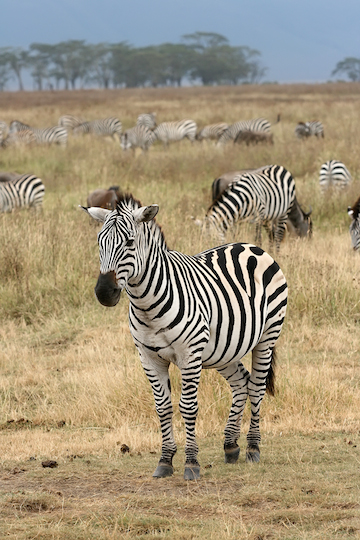 With food and water scarce in many parts of Africa, many species migrate long-distances in order to survive. A new study published in the journal, Oryx has found a new record-breaker for the continent’s longest tracked terrestrial migration: a huge group of zebras that traveled a total distance of 500 kilometers (300 miles). The journey […]
With food and water scarce in many parts of Africa, many species migrate long-distances in order to survive. A new study published in the journal, Oryx has found a new record-breaker for the continent’s longest tracked terrestrial migration: a huge group of zebras that traveled a total distance of 500 kilometers (300 miles). The journey […]
Top 10 HAPPY environmental stories of 2013
 Also see our Top 10 Environmental Stories of 2013. The discovery of a new tapir species is number seven in our first ever Top 10 List of Happy Environmental Stories. Pictured here is a pair of Kobomani tapirs caught on camera trap. The individual on the left is a female and on the right a […]
Also see our Top 10 Environmental Stories of 2013. The discovery of a new tapir species is number seven in our first ever Top 10 List of Happy Environmental Stories. Pictured here is a pair of Kobomani tapirs caught on camera trap. The individual on the left is a female and on the right a […]
22,000 elephants slaughtered for their ivory in 2012
 As the African Elephant Summit open in Botswana today, conservationists released a new estimate of the number of African elephants lost to the guns of poachers last year: 22,000. Some 15,000 elephants killed in 42 sites across 27 countries on the continent, according to newly released data from the CITES program, Monitoring the Illegal Killing […]
As the African Elephant Summit open in Botswana today, conservationists released a new estimate of the number of African elephants lost to the guns of poachers last year: 22,000. Some 15,000 elephants killed in 42 sites across 27 countries on the continent, according to newly released data from the CITES program, Monitoring the Illegal Killing […]
Climate change could increase diarrheal disease in Botswana
 Climate change may increase the incidence of diarrheal disease in Botswana, according to a recent study in the International Journal of Environmental Research and Public Health. “Diarrheal disease is a very important public health problem in Botswana,” said lead author Kathleen Alexander, who led a unique 30-year analysis (1974-2003) on the incidence of diarrhea in […]
Climate change may increase the incidence of diarrheal disease in Botswana, according to a recent study in the International Journal of Environmental Research and Public Health. “Diarrheal disease is a very important public health problem in Botswana,” said lead author Kathleen Alexander, who led a unique 30-year analysis (1974-2003) on the incidence of diarrhea in […]
Rhinos moved from South Africa to Botswana for safekeeping
 A private safari company has moved six white rhinos (Ceratotherium simum) from their home in South Africa to Botswana in a bid to save them from an out-of-control poaching crisis in their native land. Currently, around two rhinos are killed everyday in South Africa for their horns, which are then smuggled to East Asia. This […]
A private safari company has moved six white rhinos (Ceratotherium simum) from their home in South Africa to Botswana in a bid to save them from an out-of-control poaching crisis in their native land. Currently, around two rhinos are killed everyday in South Africa for their horns, which are then smuggled to East Asia. This […]
Three developing nations move to ban hunting to protect vanishing wildlife
 African savannah elephants on the Chobe River in Botswana. From 2014 on, hunting will no longer be allowed in Botswana’s public lands. Photo by: Tiffany Roufs. Three developing countries have recently toughened hunting regulations believing the changes will better protect vanishing species. Botswana has announced it will ban trophy hunting on public lands beginning in […]
African savannah elephants on the Chobe River in Botswana. From 2014 on, hunting will no longer be allowed in Botswana’s public lands. Photo by: Tiffany Roufs. Three developing countries have recently toughened hunting regulations believing the changes will better protect vanishing species. Botswana has announced it will ban trophy hunting on public lands beginning in […]
Picture of the day: the maned lioness
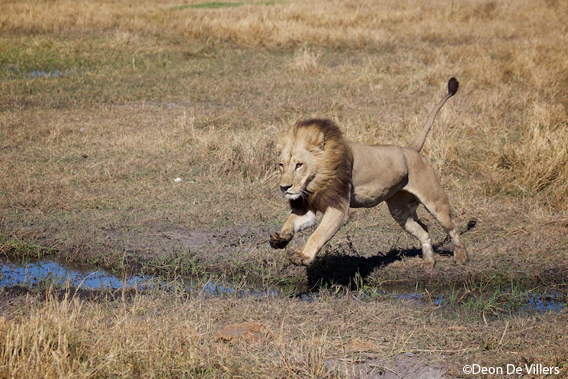 A maned lioness in Botswanna’s Okavango Delta. Photo by: Deon de Villers. The title is not a typo. Sometimes lioness grow manes as rich and large as males, and there appears to be larger proportion of such ‘maned lionesses’ in Botswana’s Okavango Delta. Luke Hunter, head of the cat NGO Panthera, told National Geographic News […]
A maned lioness in Botswanna’s Okavango Delta. Photo by: Deon de Villers. The title is not a typo. Sometimes lioness grow manes as rich and large as males, and there appears to be larger proportion of such ‘maned lionesses’ in Botswana’s Okavango Delta. Luke Hunter, head of the cat NGO Panthera, told National Geographic News […]
Mr. Darcy and the Manic Pixie Dream Girl: monkeys display distinct personality types
 A gray-footed chacma baboon (Papio ursinus griseipes) in the Okavango Delta, Botswana. Photo by: Tiffany Roufs. Remember the ‘man with no name’ played by Clint Eastwood in A Fistful of Dollars, Mr. Darcy in Jane Austen’s Pride and Prejudice, or the bubbly cute girl in every romantic comedy from Legally Blonde to Breakfast at Tiffany’s? […]
A gray-footed chacma baboon (Papio ursinus griseipes) in the Okavango Delta, Botswana. Photo by: Tiffany Roufs. Remember the ‘man with no name’ played by Clint Eastwood in A Fistful of Dollars, Mr. Darcy in Jane Austen’s Pride and Prejudice, or the bubbly cute girl in every romantic comedy from Legally Blonde to Breakfast at Tiffany’s? […]
Ten African nations pledge to transform their economies to take nature into account
 African elephants at Chobe River in Botswana. Photo by: Tiffany Roufs. Last month ten African nations, led by Botswana, pledged to incorporate “natural capital” into their economies. Natural capital, which seeks to measure the economic worth of the services provided by ecosystems and biodiversity—for example pollination, clean water, and carbon—is a nascent, but growing, method […]
African elephants at Chobe River in Botswana. Photo by: Tiffany Roufs. Last month ten African nations, led by Botswana, pledged to incorporate “natural capital” into their economies. Natural capital, which seeks to measure the economic worth of the services provided by ecosystems and biodiversity—for example pollination, clean water, and carbon—is a nascent, but growing, method […]
Photos of the day: a celebration of wetlands (for World Wetlands Day)
 The vast peatlands of Borneo are being destroyed at record rates, leading to among other impacts vast carbon emissions. Photo by: Rhett A. Butler. Forget the groundhogs, February 2nd is also World Wetland Day, commemorating the historic convention of wetlands in Ramsar, Iran in 1971. The Ramsar Treaty was an international agreement meant to address […]
The vast peatlands of Borneo are being destroyed at record rates, leading to among other impacts vast carbon emissions. Photo by: Rhett A. Butler. Forget the groundhogs, February 2nd is also World Wetland Day, commemorating the historic convention of wetlands in Ramsar, Iran in 1971. The Ramsar Treaty was an international agreement meant to address […]
Animal picture of the day: giraffe spots
 Giraffe patterns. Photo by: Tiffany Roufs. A South African giraffe (Giraffa camelopardalis giraffa) in Chobe National Park, Botswana. The world’s tallest land animal, giraffes inhabit sub-Saharan Africa. Giraffes are listed as Least Concern by the IUCN Red List, but some populations are in grave peril of extinction, while others have disappeared entirely. Giraffes are generally […]
Giraffe patterns. Photo by: Tiffany Roufs. A South African giraffe (Giraffa camelopardalis giraffa) in Chobe National Park, Botswana. The world’s tallest land animal, giraffes inhabit sub-Saharan Africa. Giraffes are listed as Least Concern by the IUCN Red List, but some populations are in grave peril of extinction, while others have disappeared entirely. Giraffes are generally […]
Animal picture of the day: African wild dog travels 250 miles
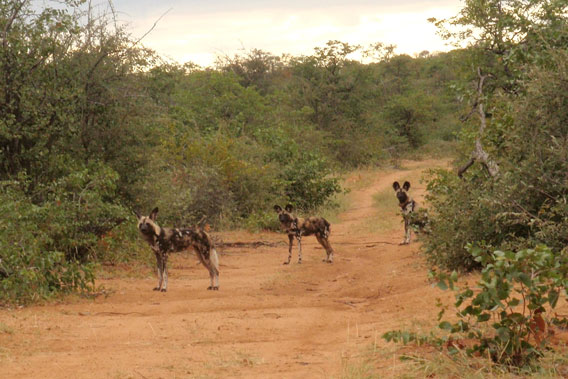 A male African wild dog (center) has been recorded traveling 250 miles across two countries. Photo by Wild At Tuli. Scientists have found a male African wild dog that has undergone an epic trip. In April 2010 the male dog was photographed in Save the Valley in eastern Zimbabwe then recently the same animal was […]
A male African wild dog (center) has been recorded traveling 250 miles across two countries. Photo by Wild At Tuli. Scientists have found a male African wild dog that has undergone an epic trip. In April 2010 the male dog was photographed in Save the Valley in eastern Zimbabwe then recently the same animal was […]
NASA Photos: beyond Mississippi flood, southern Africa sees record deluges
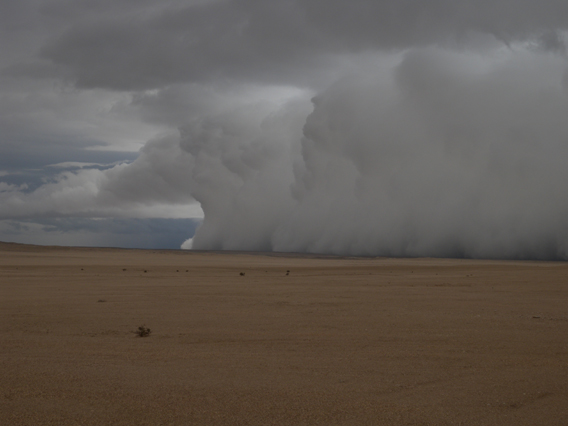 A shelf cloud passes over one of the driest regions on the African continent: the Namib desert. The shelf cloud is associated with a high-precipitation supercell thunderstorm. Photo courtesy of NASA. While record crests of the Mississippi River are creating havoc in the southern US, this is not the only region in the world facing […]
A shelf cloud passes over one of the driest regions on the African continent: the Namib desert. The shelf cloud is associated with a high-precipitation supercell thunderstorm. Photo courtesy of NASA. While record crests of the Mississippi River are creating havoc in the southern US, this is not the only region in the world facing […]
A lion’s story, an interview with the filmmakers of The Last Lions
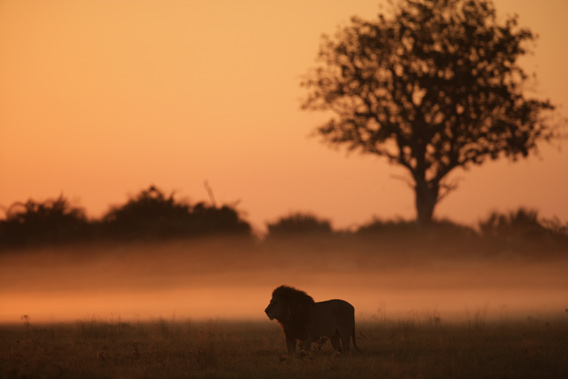 Male lion in the Okavango Delta. © National Geographic Entertainment. Photo by: Beverly Joubert . The new theatrical film, The Last Lions does not open, as one would expect, with a shot of lions or even an African panorama. Instead the first shot is a view of our planet from space at night. Billions of […]
Male lion in the Okavango Delta. © National Geographic Entertainment. Photo by: Beverly Joubert . The new theatrical film, The Last Lions does not open, as one would expect, with a shot of lions or even an African panorama. Instead the first shot is a view of our planet from space at night. Billions of […]
Language and conservation: why words matter
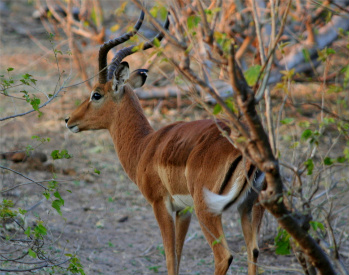 The words we choose matter. Benjamin Lee Whorf, an influential American linguist theorized that the language one speaks directly impacts our thoughts; he is quoted as saying, “language shapes the way we think, and determines what we can think about”. If this is the case then those who believe in conservation must select their words […]
The words we choose matter. Benjamin Lee Whorf, an influential American linguist theorized that the language one speaks directly impacts our thoughts; he is quoted as saying, “language shapes the way we think, and determines what we can think about”. If this is the case then those who believe in conservation must select their words […]
Solar powered conservation

Camping in the Okavango Delta in Botswana
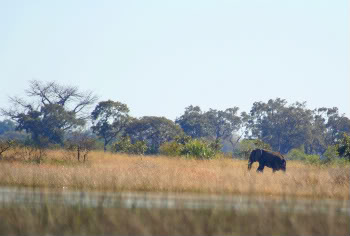
South Africa auctions last of ‘legal’ elephant ivory to China, Japan
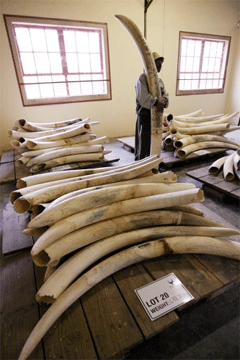 South Africa auctions last of ‘legal’ elephant ivory to China, Japan South Africa auctions last of ‘legal’ elephant ivory to China, Japan mongabay.com November 7, 2008
South Africa auctions last of ‘legal’ elephant ivory to China, Japan South Africa auctions last of ‘legal’ elephant ivory to China, Japan mongabay.com November 7, 2008
Elephant ivory auction produces low prices, controversy
 Elephant ivory auction produces low prices, controversy Elephant ivory auction produces low prices, controversy mongabay.com October 30, 2008
Elephant ivory auction produces low prices, controversy Elephant ivory auction produces low prices, controversy mongabay.com October 30, 2008
Cheetah population stabilizes in Namibia with support from farmers
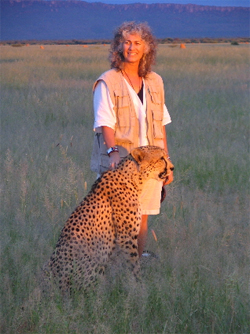 Cheetah population stabilizes in Namibia with support from farmers An interview with Dr. Laurie Marker,founder of the Cheetah Conservation Fund Rhett A. Butler, mongabay.com October 2, 2008 Cheetah population stabilizes in Namibia with support from farmers
Cheetah population stabilizes in Namibia with support from farmers An interview with Dr. Laurie Marker,founder of the Cheetah Conservation Fund Rhett A. Butler, mongabay.com October 2, 2008 Cheetah population stabilizes in Namibia with support from farmers
Cheetah population declines 90% in 100 years
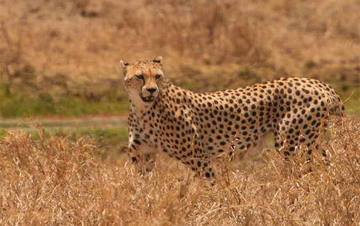 Cheetah population declines 90% in 100 years Cheetah population declines 90% in 100 years: An interview with Rebecca Klein of Cheetah Conservation Botswana Rhett A. Butler, mongabay.com September 30, 2008 . killed off the cat as a threat to their livelihoods. Today the cheetah clings to strongholds in only a few African nations. Among these […]
Cheetah population declines 90% in 100 years Cheetah population declines 90% in 100 years: An interview with Rebecca Klein of Cheetah Conservation Botswana Rhett A. Butler, mongabay.com September 30, 2008 . killed off the cat as a threat to their livelihoods. Today the cheetah clings to strongholds in only a few African nations. Among these […]
Sale of elephant ivory to Japan approved
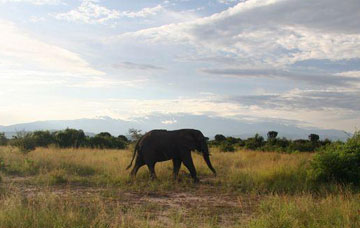 Sale of elephant ivory to Japan approved Sale of elephant ivory to Japan approved mongabay.com June 3, 2007 The Convention on International Trade in Endangered Species (CITES) approved the sale of 60 tons of elephant ivory to Japan prior to the start of a 12-day wildlife conference in The Hague, Netherlands. The agency, which oversees […]
Sale of elephant ivory to Japan approved Sale of elephant ivory to Japan approved mongabay.com June 3, 2007 The Convention on International Trade in Endangered Species (CITES) approved the sale of 60 tons of elephant ivory to Japan prior to the start of a 12-day wildlife conference in The Hague, Netherlands. The agency, which oversees […]
Feeds: news | india | latam | brasil | indonesia
 Conservation organizations, government reintroducing wildlife from other countries The story of Kissama National Park is one of perseverance, vision and disaster in waiting. The only functional national park in Angola, a country wracked by war for decades, Kissama (also called Quiçama) lost much of its wildlife, with that which is left still impacted by poaching […]
Conservation organizations, government reintroducing wildlife from other countries The story of Kissama National Park is one of perseverance, vision and disaster in waiting. The only functional national park in Angola, a country wracked by war for decades, Kissama (also called Quiçama) lost much of its wildlife, with that which is left still impacted by poaching […] With food and water scarce in many parts of Africa, many species migrate long-distances in order to survive. A new study published in the journal, Oryx has found a new record-breaker for the continent’s longest tracked terrestrial migration: a huge group of zebras that traveled a total distance of 500 kilometers (300 miles). The journey […]
With food and water scarce in many parts of Africa, many species migrate long-distances in order to survive. A new study published in the journal, Oryx has found a new record-breaker for the continent’s longest tracked terrestrial migration: a huge group of zebras that traveled a total distance of 500 kilometers (300 miles). The journey […] Also see our Top 10 Environmental Stories of 2013. The discovery of a new tapir species is number seven in our first ever Top 10 List of Happy Environmental Stories. Pictured here is a pair of Kobomani tapirs caught on camera trap. The individual on the left is a female and on the right a […]
Also see our Top 10 Environmental Stories of 2013. The discovery of a new tapir species is number seven in our first ever Top 10 List of Happy Environmental Stories. Pictured here is a pair of Kobomani tapirs caught on camera trap. The individual on the left is a female and on the right a […] As the African Elephant Summit open in Botswana today, conservationists released a new estimate of the number of African elephants lost to the guns of poachers last year: 22,000. Some 15,000 elephants killed in 42 sites across 27 countries on the continent, according to newly released data from the CITES program, Monitoring the Illegal Killing […]
As the African Elephant Summit open in Botswana today, conservationists released a new estimate of the number of African elephants lost to the guns of poachers last year: 22,000. Some 15,000 elephants killed in 42 sites across 27 countries on the continent, according to newly released data from the CITES program, Monitoring the Illegal Killing […] Climate change may increase the incidence of diarrheal disease in Botswana, according to a recent study in the International Journal of Environmental Research and Public Health. “Diarrheal disease is a very important public health problem in Botswana,” said lead author Kathleen Alexander, who led a unique 30-year analysis (1974-2003) on the incidence of diarrhea in […]
Climate change may increase the incidence of diarrheal disease in Botswana, according to a recent study in the International Journal of Environmental Research and Public Health. “Diarrheal disease is a very important public health problem in Botswana,” said lead author Kathleen Alexander, who led a unique 30-year analysis (1974-2003) on the incidence of diarrhea in […] A private safari company has moved six white rhinos (Ceratotherium simum) from their home in South Africa to Botswana in a bid to save them from an out-of-control poaching crisis in their native land. Currently, around two rhinos are killed everyday in South Africa for their horns, which are then smuggled to East Asia. This […]
A private safari company has moved six white rhinos (Ceratotherium simum) from their home in South Africa to Botswana in a bid to save them from an out-of-control poaching crisis in their native land. Currently, around two rhinos are killed everyday in South Africa for their horns, which are then smuggled to East Asia. This […] African savannah elephants on the Chobe River in Botswana. From 2014 on, hunting will no longer be allowed in Botswana’s public lands. Photo by: Tiffany Roufs. Three developing countries have recently toughened hunting regulations believing the changes will better protect vanishing species. Botswana has announced it will ban trophy hunting on public lands beginning in […]
African savannah elephants on the Chobe River in Botswana. From 2014 on, hunting will no longer be allowed in Botswana’s public lands. Photo by: Tiffany Roufs. Three developing countries have recently toughened hunting regulations believing the changes will better protect vanishing species. Botswana has announced it will ban trophy hunting on public lands beginning in […] A maned lioness in Botswanna’s Okavango Delta. Photo by: Deon de Villers. The title is not a typo. Sometimes lioness grow manes as rich and large as males, and there appears to be larger proportion of such ‘maned lionesses’ in Botswana’s Okavango Delta. Luke Hunter, head of the cat NGO Panthera, told National Geographic News […]
A maned lioness in Botswanna’s Okavango Delta. Photo by: Deon de Villers. The title is not a typo. Sometimes lioness grow manes as rich and large as males, and there appears to be larger proportion of such ‘maned lionesses’ in Botswana’s Okavango Delta. Luke Hunter, head of the cat NGO Panthera, told National Geographic News […] A gray-footed chacma baboon (Papio ursinus griseipes) in the Okavango Delta, Botswana. Photo by: Tiffany Roufs. Remember the ‘man with no name’ played by Clint Eastwood in A Fistful of Dollars, Mr. Darcy in Jane Austen’s Pride and Prejudice, or the bubbly cute girl in every romantic comedy from Legally Blonde to Breakfast at Tiffany’s? […]
A gray-footed chacma baboon (Papio ursinus griseipes) in the Okavango Delta, Botswana. Photo by: Tiffany Roufs. Remember the ‘man with no name’ played by Clint Eastwood in A Fistful of Dollars, Mr. Darcy in Jane Austen’s Pride and Prejudice, or the bubbly cute girl in every romantic comedy from Legally Blonde to Breakfast at Tiffany’s? […] African elephants at Chobe River in Botswana. Photo by: Tiffany Roufs. Last month ten African nations, led by Botswana, pledged to incorporate “natural capital” into their economies. Natural capital, which seeks to measure the economic worth of the services provided by ecosystems and biodiversity—for example pollination, clean water, and carbon—is a nascent, but growing, method […]
African elephants at Chobe River in Botswana. Photo by: Tiffany Roufs. Last month ten African nations, led by Botswana, pledged to incorporate “natural capital” into their economies. Natural capital, which seeks to measure the economic worth of the services provided by ecosystems and biodiversity—for example pollination, clean water, and carbon—is a nascent, but growing, method […] The vast peatlands of Borneo are being destroyed at record rates, leading to among other impacts vast carbon emissions. Photo by: Rhett A. Butler. Forget the groundhogs, February 2nd is also World Wetland Day, commemorating the historic convention of wetlands in Ramsar, Iran in 1971. The Ramsar Treaty was an international agreement meant to address […]
The vast peatlands of Borneo are being destroyed at record rates, leading to among other impacts vast carbon emissions. Photo by: Rhett A. Butler. Forget the groundhogs, February 2nd is also World Wetland Day, commemorating the historic convention of wetlands in Ramsar, Iran in 1971. The Ramsar Treaty was an international agreement meant to address […] Giraffe patterns. Photo by: Tiffany Roufs. A South African giraffe (Giraffa camelopardalis giraffa) in Chobe National Park, Botswana. The world’s tallest land animal, giraffes inhabit sub-Saharan Africa. Giraffes are listed as Least Concern by the IUCN Red List, but some populations are in grave peril of extinction, while others have disappeared entirely. Giraffes are generally […]
Giraffe patterns. Photo by: Tiffany Roufs. A South African giraffe (Giraffa camelopardalis giraffa) in Chobe National Park, Botswana. The world’s tallest land animal, giraffes inhabit sub-Saharan Africa. Giraffes are listed as Least Concern by the IUCN Red List, but some populations are in grave peril of extinction, while others have disappeared entirely. Giraffes are generally […] A male African wild dog (center) has been recorded traveling 250 miles across two countries. Photo by Wild At Tuli. Scientists have found a male African wild dog that has undergone an epic trip. In April 2010 the male dog was photographed in Save the Valley in eastern Zimbabwe then recently the same animal was […]
A male African wild dog (center) has been recorded traveling 250 miles across two countries. Photo by Wild At Tuli. Scientists have found a male African wild dog that has undergone an epic trip. In April 2010 the male dog was photographed in Save the Valley in eastern Zimbabwe then recently the same animal was […] A shelf cloud passes over one of the driest regions on the African continent: the Namib desert. The shelf cloud is associated with a high-precipitation supercell thunderstorm. Photo courtesy of NASA. While record crests of the Mississippi River are creating havoc in the southern US, this is not the only region in the world facing […]
A shelf cloud passes over one of the driest regions on the African continent: the Namib desert. The shelf cloud is associated with a high-precipitation supercell thunderstorm. Photo courtesy of NASA. While record crests of the Mississippi River are creating havoc in the southern US, this is not the only region in the world facing […] Male lion in the Okavango Delta. © National Geographic Entertainment. Photo by: Beverly Joubert . The new theatrical film, The Last Lions does not open, as one would expect, with a shot of lions or even an African panorama. Instead the first shot is a view of our planet from space at night. Billions of […]
Male lion in the Okavango Delta. © National Geographic Entertainment. Photo by: Beverly Joubert . The new theatrical film, The Last Lions does not open, as one would expect, with a shot of lions or even an African panorama. Instead the first shot is a view of our planet from space at night. Billions of […] The words we choose matter. Benjamin Lee Whorf, an influential American linguist theorized that the language one speaks directly impacts our thoughts; he is quoted as saying, “language shapes the way we think, and determines what we can think about”. If this is the case then those who believe in conservation must select their words […]
The words we choose matter. Benjamin Lee Whorf, an influential American linguist theorized that the language one speaks directly impacts our thoughts; he is quoted as saying, “language shapes the way we think, and determines what we can think about”. If this is the case then those who believe in conservation must select their words […]

 South Africa auctions last of ‘legal’ elephant ivory to China, Japan South Africa auctions last of ‘legal’ elephant ivory to China, Japan mongabay.com November 7, 2008
South Africa auctions last of ‘legal’ elephant ivory to China, Japan South Africa auctions last of ‘legal’ elephant ivory to China, Japan mongabay.com November 7, 2008 Elephant ivory auction produces low prices, controversy Elephant ivory auction produces low prices, controversy mongabay.com October 30, 2008
Elephant ivory auction produces low prices, controversy Elephant ivory auction produces low prices, controversy mongabay.com October 30, 2008 Cheetah population stabilizes in Namibia with support from farmers An interview with Dr. Laurie Marker,founder of the Cheetah Conservation Fund Rhett A. Butler, mongabay.com October 2, 2008 Cheetah population stabilizes in Namibia with support from farmers
Cheetah population stabilizes in Namibia with support from farmers An interview with Dr. Laurie Marker,founder of the Cheetah Conservation Fund Rhett A. Butler, mongabay.com October 2, 2008 Cheetah population stabilizes in Namibia with support from farmers Cheetah population declines 90% in 100 years Cheetah population declines 90% in 100 years: An interview with Rebecca Klein of Cheetah Conservation Botswana Rhett A. Butler, mongabay.com September 30, 2008 . killed off the cat as a threat to their livelihoods. Today the cheetah clings to strongholds in only a few African nations. Among these […]
Cheetah population declines 90% in 100 years Cheetah population declines 90% in 100 years: An interview with Rebecca Klein of Cheetah Conservation Botswana Rhett A. Butler, mongabay.com September 30, 2008 . killed off the cat as a threat to their livelihoods. Today the cheetah clings to strongholds in only a few African nations. Among these […] Sale of elephant ivory to Japan approved Sale of elephant ivory to Japan approved mongabay.com June 3, 2007 The Convention on International Trade in Endangered Species (CITES) approved the sale of 60 tons of elephant ivory to Japan prior to the start of a 12-day wildlife conference in The Hague, Netherlands. The agency, which oversees […]
Sale of elephant ivory to Japan approved Sale of elephant ivory to Japan approved mongabay.com June 3, 2007 The Convention on International Trade in Endangered Species (CITES) approved the sale of 60 tons of elephant ivory to Japan prior to the start of a 12-day wildlife conference in The Hague, Netherlands. The agency, which oversees […]